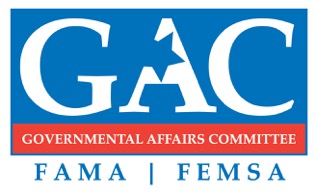September 24, 2019 the Senate Homeland Security Appropriations Subcommittee marked up its FY 2020 DHS appropriations bill. The Subcommittee increased Assistance to Firefighter Grant (AFG) and SAFER funding by $10 million to a total of $710 million ($355 million for each program).
While modest, the increase is a sign of continued support for these programs by the Senate appropriators. The House Appropriations Committee passed a FY 2020 DHS Appropriations bill increasing funding for AFG and SAFER by $25 million each, to $375 million ($750 million total).
The Congress will need to pass a short term “continuing resolution” to keep the federal government funded beyond September 30th, the end of the 2019 fiscal year. Last week the House passed such a bill extending funding through November 21. This will allow the Senate and House time to come agreement on the various appropriations bills for FY 2020.
Below is a summary provided by the Subcommittee of other key State and local FEMA grant programs and their funding levels contained in the Senate subcommittee bill.
Federal Emergency Management Agency (FEMA) – $21.8 billion, of which $17.8 billion is for the Disaster Relief Fund, representing an overall increase of $5.2 billion above the FY2019 enacted level.
The bill includes strong support for state and local first responders and emergency management personnel, providing a total of $2.7 billion for these grant and training programs, including:
- $525 million for State Homeland Security Grants, including $90 million for Operation Stonegarden;
- $600 million for Urban Area Security Initiative grants, including $50 million for non-profit organizations;
- $100 million each for Port and Transit Security grants;
- $710 million for Fire and SAFER grants;
- $355 million for Emergency Management Performance grants;
- $148 million for Flood Hazard Mapping and Risk Analysis Program;
- $10 million for Regional Catastrophic Preparedness grants;
- $10 million for the Rehabilitation of High Hazard Potential Dams grants;
- $67 million for the Center for Domestic Preparedness;
- $18 million for the Center for Homeland Defense and Security;
- $19 million for the Emergency Management Institute; and
- $101 million for the National Domestic Preparedness Consortium.
If you have any questions, please contact GAC Co-chairs:
John Granby jgranby@lionprotects.com
Lee Morris lmorris@oshkoshcorp.com
David Durstine dduristine@idexcorp.com or
GAC Sr. Advisor Dave Gatton dgatton@dinitiatives.com
